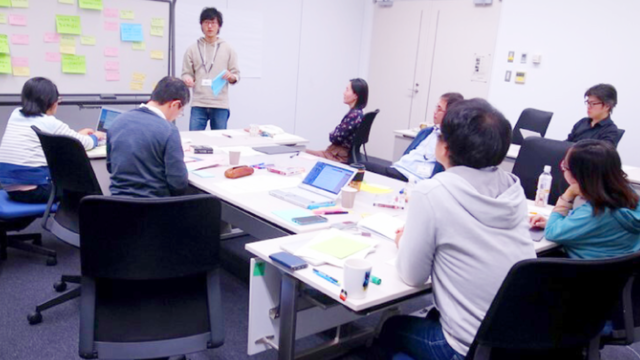
Co-creative approaches to knowledge production and implementation series (part 2): What is co-creation and why is it used?
This article is part 2 of a series of articles based on a special issue of the journal Evidence & Policy.
Special issue guest editors Metz, Boaz, and Robert1 advise that the term ‘co-creation’ has been used in the knowledge mobilisation literature to describe close, collaborative working.
They further explain that co-creation itself was originally popularised in the context of business management by Prahalad and Ramaswamy2 who argued that the ‘distinguishing feature of the new marketplace is that consumers become a new source of competence for the corporation’.
Defining co-creation
Metz, Boaz, and Robert report that two of the papers in the special issue consider whether co-creation has been sufficiently clearly defined as an approach to closing the research-to-practice gap, and whether co-creation is distinct from other stakeholder participation approaches.
In Nicholas and colleagues’ 3 research article and Locock and Boaz’s4 debate piece, the boundaries of co-creation are examined in terms of whether it is a unique approach worthy of specific methods and practices.
These papers offer differing points of view regarding the utility of co-creation as a distinct approach. Locock and Boaz encourage boundary spanning to promote learning across different participatory approaches, and Nicholas and colleagues posit that viewing co-creation as a unique research approach will provide a basis for critical reflection, ongoing improvement, and a platform for debate on ethics, legitimacy and quality of co-creation approaches.
However, both papers present a shared understanding of the motivation and purpose of co-creation. They describe motivations for co-creation in terms of the inclusion of those likely to be affected by the work and making interventions more likely to reflect the needs of service users in their daily lives.
Both papers explore how issues of ethics, power and legitimacy are considered in co-creative approaches, asking key questions about why it matters that patients are involved in designing and evaluating interventions.
Nicholas and colleagues use critical heuristics to tackle issues of motivation, power, expertise and legitimacy in more detail. For example, when exploring issues of power, they describe shared decision making as an important feature of co-creation. Legitimacy of co-creation approaches is underpinned by explicit core values and assumptions about how affected parties will be involved in the work.
Core features of co-creation
Metz, Boaz, and Robert report that research papers by Yazejian et al5 and Sherriff et al6 take a more pragmatic approach and hypothesise that core features of co-creation can be operationalised and evaluated. Yazejian and colleagues use a case study methodology to assess whether the use of a co-creative technical assistance approach with Head Start early childhood centres in the US achieved intended outcomes, and Sherriff and colleagues describe critical success factors pertaining to a co-creative approach used in the Study of Environment on Aboriginal Resilience and Child Health (SEARCH) in Australia.
While these studies were conducted in different countries and service settings with different populations, the authors define similar core features of co-creation:
- Valuing local knowledge – Yazejian and colleagues describe co-learning as understanding context and culture, creating spaces for new ideas to emerge, valuing the expertise of local practitioners and families, and synthesising diverse perspectives and checking for understanding. Sherriff and colleagues describe valuing local Aboriginal knowledge by working collaboratively with Aboriginal communities to produce a more culturally sensitive design and employing local Aboriginal staff to provide guidance on the research design, data collection, analysis and interpretation.
- Brokering connections and building trust – Sherriff and colleagues discuss connecting across cultures by supporting mutual learning through small, frequent and informal meetings with the community. They note that both the quality and quantity of interactions was important for building and sustaining trusting relationships. Yazejian and colleagues describe brokering as an essential element of co-creation. Brokering involves connecting otherwise disconnected individuals or groups affected by the work and enabling knowledge exchange. Connections among individuals and communities is described as vital to the success of the work. Yazejian and colleagues also discuss building trusting relationships and approaching the co-creative work with regard for others as legitimate, respected, and valuable contributors to the development and growth of the innovations and associated processes and outcomes.
- Ongoing collaboration, investment and support – Sherriff and colleagues describe how resources, reciprocity, and follow-through demonstrate long-term commitment to community members, while Yazejian and colleagues describe the importance of tailoring support so that the frequency, duration and intensity of co-creative support depend on the needs, goals and context for the local community. Both approaches, however, emphasise that such tailoring helps to build trust and relationships which are central to successful co-creation efforts.
- Leadership – Yazejian and colleagues describe how co-creative approaches foster space for new and emerging leaders, particularly those without historic or current access to power. This aligns with Sherriff’s description of strong credible leadership that ensures everyone has a voice and diversifies the partnership’s perspectives.
- Facilitation – Yazejian and colleagues explain the importance of facilitation to enable participatory problem solving; they promote cycles of mutual consultations among stakeholders to ensure different forms of knowledge and ways of knowing are integrated in planning and solutions. Sherriff and colleagues emphasise shared power and collaborative problem solving where facilitation supports working through challenges together.
Next part (part 3): Does co-creation produce added value and contribute to desired outcomes?
Article source: Adapted from the Evidence & Policy special issue Co-creative approaches to knowledge production: what next for bridging the research to practice gap?, CC BY-NC 4.0.
Acknowledgements: This series has been made possible by the publication of the special issue as open access and under a Creative Commons license. The guest editors and paper authors are commended for their leadership in this regard.
Header image source: Adapted from an image by Michelle Pacansky-Brock on Flickr, CC BY 2.0.
References:
- Metz, A., Boaz, A., & Robert, G. (2019). Co-creative approaches to knowledge production: what next for bridging the research to practice gap?. Evidence & Policy: A Journal of Research, Debate and Practice, 15(3), 331-337. ↩
- Prahalad, C. K., & Ramaswamy, V. (2000). Co-opting customer competence. Harvard business review, 78(1), 79-90. ↩
- Nicholas, G., Foote, J., Kainz, K., Midgley, G., Prager, K., & Zurbriggen, C. (2019). Towards a heart and soul for co-creative research practice: a systemic approach. Evidence & Policy: A Journal of Research, Debate and Practice, 15(3), 353-370. ↩
- Locock, L., & Boaz, A. (2019). Drawing straight lines along blurred boundaries: Qualitative research, patient and public involvement in medical research, coproduction and co-design. Evidence & Policy: A Journal of Research, Debate and Practice, 15(3), 409-421. ↩
- Yazejian, N., Metz, A., Morgan, J., Louison, L., Bartley, L., Fleming, W. O., … & Schroeder, J. (2019). Co-creative technical assistance: essential functions and interim outcomes. Evidence & Policy: A Journal of Research, Debate and Practice 15(3), 339-352. ↩
- Sherriff, S. L., Miller, H., Tong, A., Williamson, A., Muthayya, S., Redman, S., … & Haynes, A. (2019). Building trust and sharing power for co-creation in Aboriginal health research: a stakeholder interview study. Evidence & Policy: A Journal of Research, Debate and Practice, 15(3), 371-392. ↩
Also published on Medium.



